True friendship is a fine art. When you find a true friend, a friend that will be there when the chicken hits the fan, be sure to count your blessings. Many people will live their whole life with nothing more than acquaintances, rather than friendships. Because friends respect one another, it naturally leads to leadership influence in respective areas of expertise. In order to lead people properly, one must love the person, as a fellow human being, believing in his/her goals and dreams. In other words, friendship must come before leadership, forming an authentic speed of trust relationship. Without love for people, leadership can quickly degrade into manipulation, causing damage to the leaders heart and the community’s future. Chris Brady and I wrote an entire book on leadership, our #1 best seller, Launching a Leadership Revolution, a must read for anyone in the leadership field. If you haven’t read that book, be sure to do so, because the principles taught here will come to life, at a new level, when combined with the LLR teachings.
Before diving into the details of this chapter, let’s examine our hearts. Why do you want to lead? Do you care for the people or just the prestige associated with leadership? Are you willing to sacrifice for the team when necessary? Although there are many rewards for leaders, at the end of the day, leadership is about service to others, not about perks for self. Leaders must love people and use things, not love things and use people. This is foundational for all long-term leadership, love is the glue that holds communities together during the struggles to success . When a community doesn’t feel loved, believing they are just part of the machine, they will stay only for material rewards. In the past, that may have worked, but in today’s competitive marketplace, communities will surpass individuals every time.
Since friendship comes before leadership, let’s begin our study with the key principles to develop authentic friendships. Remember, these are principles, not techniques, being more a matter of the heart than just the physical actions. Applying the techniques, without the right heart, will come off as inauthentic, hurting the relationship. But with the right heart, following the principles suggested, anyone can build relationships that will last a lifetime, leading to the joy associated with true fellowship, creating a foundation for leadership excellence. When gathering with true friends for a night of fellowship, food, and fun, the laughter and learning brings happiness to all that are present, because the friendship is founded upon trust developed through proper application of the friendship principles. Friends allow you to relax and be yourself, knowing that you will be loved, faults and all. If you want great friendships that will last a lifetime, then be a great friend first. There are several books that I recommend to help in becoming a true friend to others. The first is Dale Carnegie’s classic, How to Win Friends and Influence People and the second is Les Giblin’s, How to Have Confidence and Power with People. These two books did more for me, in relating to people, than any other people skills books. With these books and the six principles that I am about to share, you will radically transform your relationships.
The first principle in developing healthy relationships is to learn that people are drawn to happy open people, not unhappy closed people. By following the resolutions discussed previously in this book, one will find greater happiness in life. Happiness isn’t something to be sought directly, but is found indirectly by applying personal discipline to a worthwhile goal or dream. Having a positive attitude is one of the quickest ways to draw people towards you. Attitude is a magnet that draws or repels, depending upon whether it’s a positive or negative one. Resolution #3 covers positive attitude and EQ, so I won’t go into much detail here, but refer back to it for further comments on attitude. A second factor in drawing people to you is the power of a genuine smile. Smiling is part of the universal language for the world, communicating happiness and openness. When traveling internationally, even when one doesn’t speak the language, a baby smiling can bring smiles and cheerfulness to all around them. When people see you smile, it’s surprising how many people will smile right back at you. If you believe that you are happy, but aren’t smiling, please notify your face.
Another key to communicate openness and approachability is personal appearance. How you dress and groom communicates to others how you feel about yourself. Dress for success is more than just a catch phrase. Grooming for success is just as important. For example, if you have breath that would knockout a camel cold, get some breath mints, gum, or mouth wash. Body odor is another quick way to communicate that you are unapproachable. If they can’t get within ten feet of you without gasping, it might be difficult for you to nurture a longterm friendship. First impressions, whether we like it or not, do have a huge impact on our ability to have a second impression. Being approachable means that you attitude mentally, your smile and smells physically, and your looks aesthetically communicate friendliness to others. If you are not sure how you are doing, ask your spouse or close friend. Allow them to speak honestly, with the goal being to improve in openness and approachability.
The second principle in developing people skills is to take a genuine interest in others. What is a person’s favorite subject to talk about? If you guessed themselves, then you just won the jackpot. Friendships are based upon mutual interests, so learning about others interests is a key step in the process of nurturing relationships. For example, a person’s name is sweet to their ears. When you meet people, be sure to take the time to learn, and pronounce their name properly. Even, if you have to ask them to repeat their name, they won’t be offended as it displays an interest in them. With a name like Orrin, I have had to repeat my name many times, but I was always impressed when someone took the time to get my name right. The best way to do this is to say it several times during the conversation, complimenting them by your care to remember their name, and, through repetition, storing it into memory.
One of the quickest ways to display an interest in others is to listen to them. Stephen Covey titled it, “seek first to understand, then be understood.” You have two ears and one mouth, let’s use them in that proportion. I find that I learn much more when I listen, rather than talk. I believe you will discover this too. Ask questions and then listen. What questions you ask? Why not start with the FOR method – Family, Occupation, and Recreation? These are great starter questions to get someone talking about themselves, helping you learn more about them. For example, if you just met John and he is a dentist, ask, “John, how did you get into the dental field?” I love hearing the stories develop after that question. Whether is was a parent who encouraged them, a friend in the field, or a dream from childhood, it’s fascinating to learn people’s stories. All stories have a dream, struggle, victory component, and as I listen, I am listening for the key struggles that were overcome. Afterwards, I can point out to them how they played like a champion, finishing what they started. Usually, during the discussion, the new friend will pause, realizing that he has been doing most of the talking, and will probably need encouragement to continue. Remember, he is used to people only talking, not listening, so he is probably wondering what is wrong with you.
Cultivate listening into one of your most developed skills. A genuine interest in others will come through in your conversations, taking listening to the highest level of active listening. Active listening is the key to help others feel comfortable talking while intently listening. Stay focused on them, looking them in the eyes, nodding with understanding, empathizing with the success story being shared. In order to learn more of the dream, struggle, victory life story, you may need to ask questions during the active listening process. Questions like: “Really, why is that?”; “Serious?”; “What kept you going?”; “And then what happened?”; “No kidding?”; “That’s amazing!”; “Unbelievable”; How did you keep going?”, and many other short comments to inspire other to talk while you actively listen. I know, this isn’t rocket science, but listening skills are the most effective and underutilized people skill. I want to ensure everyone understands the importance of drawing others out, as nothing bonds people to you as quickly as active listening does, since nothing compliments a person more than taking a genuine interest in them. I have found over the years that I have learned much more by listening to others, and, when I was ready to talk, I had their undivided attention. I like to learn from experience, but if I listen well, I can learn from others experience also, not having to repeat the same lesson that others have taken for me. By listening to others, you learn from experience – their experiences, saving you time and money. To sum up, applying active listening skills, when you meet others, displays a genuine interest in them, paying a huge compliment by listening and learning valuable lessons along the way.
The third principle in developing true friendship is finding value in others. Before people will find value in you, they typically must first feel valued by you. This can create a chicken and the egg scenario where each person is waiting for the other to value them. I have witnessed so many discussions where each person attempts to one up the other by rolling out his list of achievements. Instead, let the person share their achievements and be truly impressed. By giving relationship oxygen to the other side, they can breathe easier and listen after you have valued them. Let’s stop the crazy cycle by valuing others first, it cost nothing (unless your self pride is more important than others self worth), but it pays huge dividends. How does one find value in others? Les Giblin, the author of How to Have Confidence and Power with People, give the Triple A formula that is pure gold in relationships: Accept, Approve, and Appreciate. I encourage you to read over and over again, Chapter 6 of Giblin’s book covering the three A’s. It really is that good! Let me share an overview of the Triple A formula here to help define the terms and start the learning process.
Acceptance from one human being to another creates peace, allowing one to relax and open up. When someone is constantly judging everything said and done, it doesn’t allow the other person to relax, making friendship nearly impossible. Acceptance does not mean you approve of everything that the person does, but you will never influence anyone that you don’t accept as a human being first. I have found, that only after accepting the person as they are, that it frees them up to become what they want to be. A mentor’s acceptance brings peace and joy, allowing the other person some breathing space to develop personally. Acceptance to the soul is like food for the body, giving people nourishment, providing energy for further improvement. By accepting people as they are, they start desiring further food, creating a process of growth, nurtured along by your acceptance of them. Most people get this wrong, thinking they cannot accept someone until they do everything right. The problem with this is that no one does everything right, leaving all of us unaccepted, if everyone thought this way. All of us need to grow, I certainly know that I do, but when people accept me for the way I am, this gives me the soul nourishment to keep moving on. Since we have a full time project in working to improve ourselves, we should judge lightly the faults of others. How many people in your life are you feeding with acceptance?
Approval moves beyond acceptance of the person into approval of specific actions and talents. While acceptance is more an absence of negatives, approval is the recognition of a person’s positives. In the Triple A formula spelled out in Giblin’s book, I view acceptance as the appetizer, approval as the main dish, and appreciation as the dessert, in the buffet for the human soul. In order to approve someone, you must be looking for the attributes that you respect and admire in others. I believe the reason most people do not take the time to approve of others is because they are too busy seeking acceptance, approval and appreciation for themselves. When you can get over yourself, you will be in a much better position to help others get over themselves. Focus everyday, on pointing out to those closest to you, the things that you respect and admire about them. Approval is like oil in an engine, making everything run smoother with less friction. Interestingly, approval has more of an impact, when the approval is in a less than obvious attribute. For example, pointing out to a professional car racer that you admire the way he drives won’t have the same impact as pointing out you admire his relationship with his children. Be a professional observer of excellence in others, and then point it out! Most, so preoccupied with themselves won’t observe, but even if you do observe, it only reaches the other person by sharing your positive observations. What is the point of observing without sharing? How many people are you approving in your life?
Appreciation is the dessert in relationship foods for the soul. When you appreciate someone, you communicate to them that they are special to you, not just another face in the crowd. Appreciate is the opposite of depreciate. When something depreciates, it loses its value; but when something appreciates, it gains in value. Are you appreciating those closest to you? Are you increasing the value of your friends and family by appreciating them? Little things make all the difference here. When you set an appointment, be on time as that communicates you value the other person. Another is to thank people personally for a job well done. Single out what you appreciate about them as a person and in their work, making them feel special and separated from the crowd. If you really want to appreciate others, then share all the good you can about them to others. When others do great work, share your appreciation, not just with them, but to everyone that they know. This is the proper use of talking behind someone else’s back, all the good that you know about them. Everyone wants to feel accepted, approved, and appreciated, sadly most people believe condemning, criticizing, and complaining will help to change people, but nothing could be further from the truth. You catch more bees with honey than you ever will with vinegar, so put away the vinegar for good, and start attracting people to you through the Giblin’s Triple A formula.
The fourth principle to build lifelong friendships is building a shared vision of the future. Friendships are based upon shared experiences, the more positive experiences that people share together, the more friendships are strengthened. Conversely, when friends lack a common vision, they lose shared experiences and eventually lose the bonds that drew them together in the first place. All of us have had friends from high school that didn’t continue, having lost the common vision (geting out of school), and the shared experiences. Lifetime friends are different, they are built upon common visions that last longer than the high school or job where they met. My lifetime friends all have strengths and weaknesses (just as I do), but friends magnify each others strengths, while protecting each others weaknesses. Few people think through why they have the friends that they have, but essentially, friends build social communities, providing value to each other by leveraging each others strengths and enjoying each others company. In other words, the friends that you have, you have because you admire certain strengths that they possess, enhancing your life by the strengths in their life. In the same way, your strengths increase your friends enjoyment and success on their journey of life. Shared visions, shared experiences, shared strengths while protecting weaknesses, forms the recipe for long lasting enjoyment for both parties in life long friendships.
But in life, struggles will occur, blurring the common vision. Friends will need empathy from one another to endure the hardships thrown at them. When a friend is hurting, its important to be there for them, listening to his situation, understanding his pain, empathizing with him, while redirecting his focus to solutions. Friends must learn to reframe the struggles in each others lives, giving a better perspective to help friends endure. When friends fall into a pit, it’s your responsibility to help them find the way out. A true friend empathizes with, but never sympathizes with their friends struggles. Meaning, friends will feel each others pain, but not jump into the pit with each other. Instead, friends throw ropes down into the pit to help their friends get out. Listen, understand, empathize, but then reframe and help them move ahead. All friends will go through challenges, but a true friend helps them see the light at the end of the tunnel of darkness. Friends will remember that when the chicken hit the fan in their life, that you took the time to be there, creating bonds of friendship that will stand the test of time. Friends who help each other in times of need are rare, so hold onto these friends. I count a person’s real wealth to be in the quality of friends developed, not monetary net worth developed. Are you a priceless friend to your friends?
Fidelity to the reputation and character of one’s friends is another key principle in enduring friendships. What is friendship if it isn’t loyal to one another when needed? Loyalty to friends doesn’t mean, my friend right or wrong, but it does mean my friend, let’s help him do right. A true friend doesn’t exit the scene when life gets tough, rather, he enters more boldly to help out. Fair weather friends are not really friends at all. It takes real courage to stick by people when they’re dealt painful cards in life, but that’s exactly when true friend are needed. When someone hurts a friend, they hurt all his friends as friends stick together. In this situation, friends must rally together to focus on resolving the dispute between friends. If your friend is following the conflict resolution principles, but the other side isn’t, then the other side will know they have violated your friendship as well. Conversely, if your friend is not following conflict resolution guidelines, you must sit down in love and loyalty and speak truth to them with the hope that both sides will follow the appropriate principles. Friends have a responsibility to be loyal to their friends, abandoning a friendship only when a friend abandons truth repeatedly, creating a situation where defending your friend would put you on the side of untruth. Even in this situation, I let my former friend know that restoration is possible when truth is restored in his life and our relationship. Loyalty, fidelity and honor are not used much in today’s society, but life long friendships must be based upon them. In my opinion, next to truth itself, loyalty is the most valued principle in a true friendship, forming the glue that holds friendships together during the storms of life.
Lastly, friends celebrate each others victories together. Can you be as excited for a friends victory as you are your own? This is essential for true friendships as friends should be each others greatest cheerleaders. Friends are not jealous of one another, nor suffer from envy, but do all they can to lift their friends up. Friends aren’t competitors, but huge fans and encouragers of one another. Why wouldn’t you celebrate when a friend succeeds at any worthy endeavor? A friends victory lifts the tide for everyone surrounding them. Friends dream together, laugh together, struggle together, have victories together, and celebrate together. Be the biggest cheerleader of your friends successes. Let your friends know how much you admire their strengths, sharing your thankfulness to be part of their lives. This will form bonds of loyalty, letting your friends know that you are proud of their successes, and proud to be their friend. Friends lift one another up when they are together, but also are the biggest cheerleaders of each other when they aren’t together as well. Be the type of friend, who cheers their accomplishments behind their backs, sharing all the good that you know about them. No one is an island unto themselves, having friends who cheer one another’s successes is essential in making life meaningful and fruitful.
True friendship is a lost art in today’s “Me” generation, but that only increases the value of a friend when you really find one. The best way to find friends of this caliber is to be one to others. In life, if someone identifies a couple of friends of this quality, then he is a blessed man. Make a personal commitment to give more to each relationship than you receive. This is much tougher to do in practice when you find true friends as they are focusing on giving more than they receive. Friendship brings so much joy into life and should be cultivated daily. Conversely, damaged relationships bring so much pain to life, and should be resolved quickly. The older I get, the more I realize that my real wealth is in my faith, family, and friends, making me more conscious to nurture the relationships that have brought so much joy into my life. In today’s world of feckless and fickle friends, give to others a friendship based upon fidelity and faithfulness. God Bless, Orrin Woodward
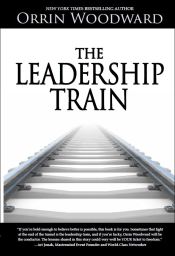
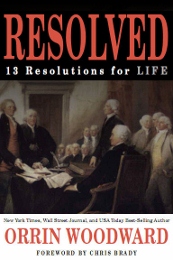
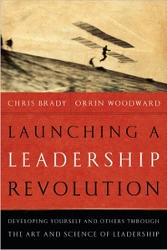



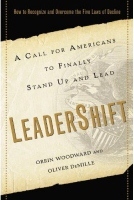


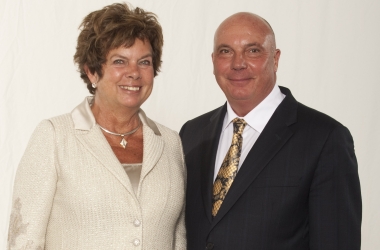
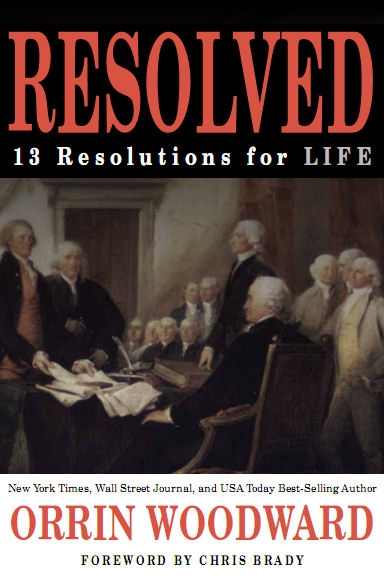 With the release of my new book
With the release of my new book 